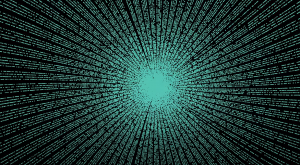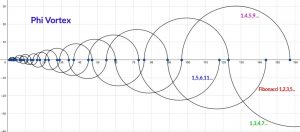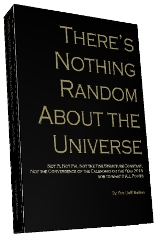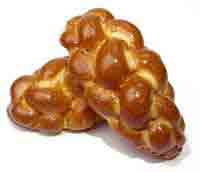 Hamotzi, the blessing over bread should be recited all year with the exception of Pesach (Passover) in order to elevate the holy sparks in our meals amongst other divine reasons. But, in Kabbalah we strive to make even higher connections whenever we can by educating ourselves on what we’re actually doing and connecting to it through the hidden technology that most people take for granted. According to the Arizal, there is a right way to do the blessing and it’s pretty simple. We won’t go into all his other meditations, as most people would find them far to cumbersome. I mean, he had 15 minutes of meditations just to wash his finger tips after the meal. The washing is recommended, as he explained that there is a negative force that hovers over tables and by washing our fingertips we disconnect from it. That negative force is also somewhat responsible for malevolent conversations that break out from time to time, G-d forbid. It is also one of the reasons it’s not recommended to sit on a table at any time.
Hamotzi, the blessing over bread should be recited all year with the exception of Pesach (Passover) in order to elevate the holy sparks in our meals amongst other divine reasons. But, in Kabbalah we strive to make even higher connections whenever we can by educating ourselves on what we’re actually doing and connecting to it through the hidden technology that most people take for granted. According to the Arizal, there is a right way to do the blessing and it’s pretty simple. We won’t go into all his other meditations, as most people would find them far to cumbersome. I mean, he had 15 minutes of meditations just to wash his finger tips after the meal. The washing is recommended, as he explained that there is a negative force that hovers over tables and by washing our fingertips we disconnect from it. That negative force is also somewhat responsible for malevolent conversations that break out from time to time, G-d forbid. It is also one of the reasons it’s not recommended to sit on a table at any time.
Nevertheless, back to the hamotzi. The right way, according to Arizal, is to place all 10 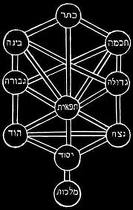 fingers on the bread when reciting the 10 words of the blessing. What you’re actually doing then is connecting to the 10 sefirot (dimensions) of the universe, especially if you recite the sefirot in your head when placing your fingers upon the bread.
fingers on the bread when reciting the 10 words of the blessing. What you’re actually doing then is connecting to the 10 sefirot (dimensions) of the universe, especially if you recite the sefirot in your head when placing your fingers upon the bread.
Simple, right?
Sure, and easy too. So let’s see what else there is. Eser, spelled Ayin-Shin-Resh (AShR) is the Hebrew word for 10, as in the 10 sefirot and as in the 10 fingers (and fingertips), represented by the letter Yud (Y) of numerical value 10, which not coincidentally graphically looks very much like a fingertip. And Eser, (AShR) has a numerical value of 570.
As we learned from Abraham, the Patriarch in his book, the Sefer Yetzirah, there are 10 sefirot of nothingness, cleaved down the middle, 5 on one side, 5 on the other, just like our 2 hands, which we place on the challah to do our blessing properly.
Ten (10) for the 10 fingers (Yuds) times 570 = 5700. Just as the previous universe, Tohu had 8 Kings and was unstable, our stable one (the world of Tikkune) has 10 Kings, metaphysically speaking, one for each sefirot. And the numerical value of King in Hebrew (Melech, MLC) is likewise 570. So the 10 Kings add up to 5700 as well.
The word King in Hebrew (Melech, MLC) reflects the entire Tree-of-life in that the Mem stands for Malchut (Kingdom) at the bottom of the tree and the Caf stands for Keter (CTR), meaning crown, at the top, and the Lamed (L) in the middle, of numerical value 30, represents the rest of the 32 Paths of wisdom that comprise the Tree-of-life (10 sefirot and 22 interconnecting pathways).
Now, we should complete the equation by adding the bread as a physical medium for the connection. We must note that the numerical value for bread, Lechem (LChM) is 78, or 3 (for the 3-columns of the tree-of-life) times the Tetragrammaton (YHVH, 26), or 26 x 3 = 78. Thus added to the completion of the 10 Kings, we get 5700 + 78 = 5778, the year Rav Yeduda HaLevi Ashlag gave for the coming of Moshiach (the Messiah).
It’s not for nothing that the only 10-letter word in the Torah is the Hebrew word for a kneading trough (VBMShERVTYC) in which the Egyptians and Israelites made their bread, as found within the 2nd plague, frogs (tzardeya) of numerical value 444, directly connected to 5778, which we’ll explain in a separate article shortly. The gematria of (VBMShERVTYC) with the kolel of 10 for the 10 letters is 1565, the exact small gematria of the ineffable Name (YHVH), an indication how important this word is.
In our next article we’ll explain how the tree-of-life is designed structurally similar to the Torah.
Shabbat Shalom


